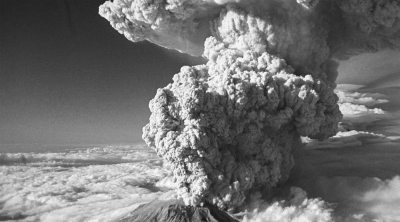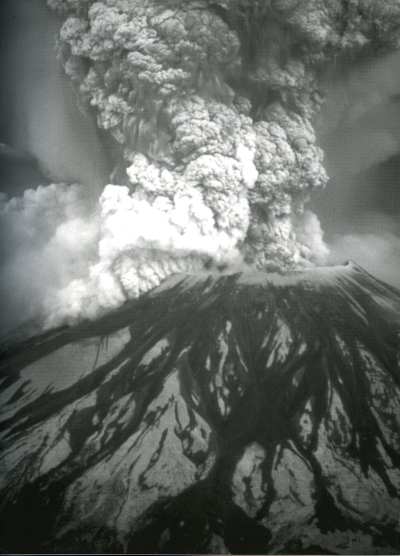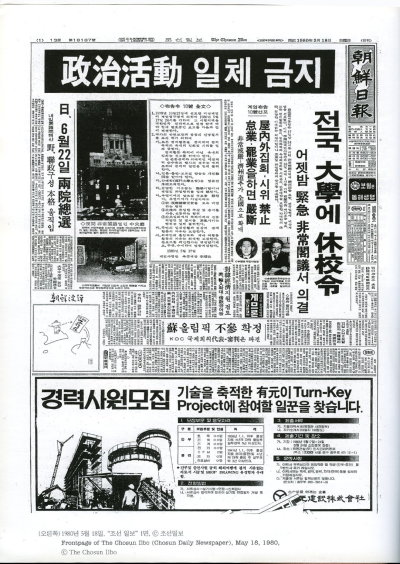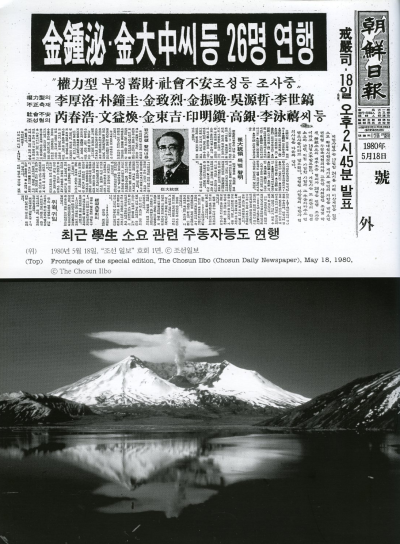
in the course of events, May 18
Issue Fighters: Thought is made in the mouth
Insa Art Space, Seoul
2006
in the course of events (May 18)The Gwangju Uprising is seen as a pivotal moment in the South Korean struggle for democracy, but media coverage during the first days of the uprising was almost non-existent in the United States, due to the eruption of the volcano Mount St. Helens and the death of Joy Division lead singer Ian Curtis on the same date.
The violent suppression of the uprising in Gwangju from May 18 to May 27, 1980, was preceded by different events. After the Coup d’état of December 12, 1979, General Chun Doo-hwan, declared martial law on May 17 to suppress student demonstrations around the country. The next day, students in Gwangju protested at the gate of Chonnam National University against the closing of the school. The students were joined by the citizens of Gwangju and the growing crowd was confronted by the use of extreme force that caused fatalities. By May 21, around 300,000 people had joined the protest. On May 22, 1980, the U.S. Carter administration approved further use of force to retake the city and agreed to provide short-term support to Chun if he agreed to long-term political change. According to U.S. government documents, the Carter administration approved South Korean plans to use military troops against pro-democracy demonstrations ten days before May 17, 1980. On May 27, airborne and army troops from five divisions were inserted and defeated the civil militias in the downtown area of Gwangju in 90 minutes.
Ian Curtis, lead singer of the band Joy Division, was a talented poet and songwriter. His songs were filled with images of emotional pain, death, violence, alienation, and urban degeneration. On May 18, 1980, Curtis committed suicide at the age of 23. After his death, the remaining members of Joy Division formed New Order, as the band had agreed to not go on as Joy Division if one of the members were to leave, or die.
The eruption of Mount St. Helens on May 18, 1980, was preceded by weeks of intense earthquake activity, steam-driven explosions from a new summit crater, and an ominous bulge that grew on the north flank. By May 17, the large area surrounding the lava dome had been pushed outward by more than 100 m. In the morning of May 18, a magnitude 5.1 earthquake occurred at 8:32 a.m. The north flank and summit slid away in a huge landslide - the largest in recorded history. Rocks, ash, volcanic gas, and steam were blasted upward and outward to the north, and the directed blast of hot material accelerated to nearly 500 km per hour.
The publication +82, is made from a collaborative workshop run by Bik Van der Pol, Insa, and the Open Archives of the Democracy Foundation with a group of Korean participants, as a part of Issue Fighters: Thought is Made in the Mouth.



